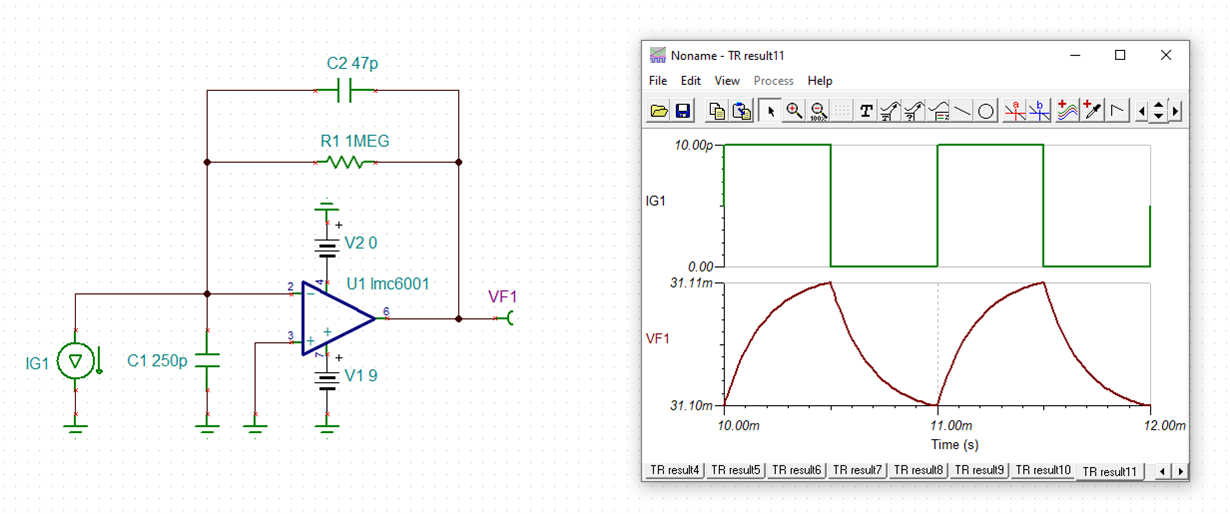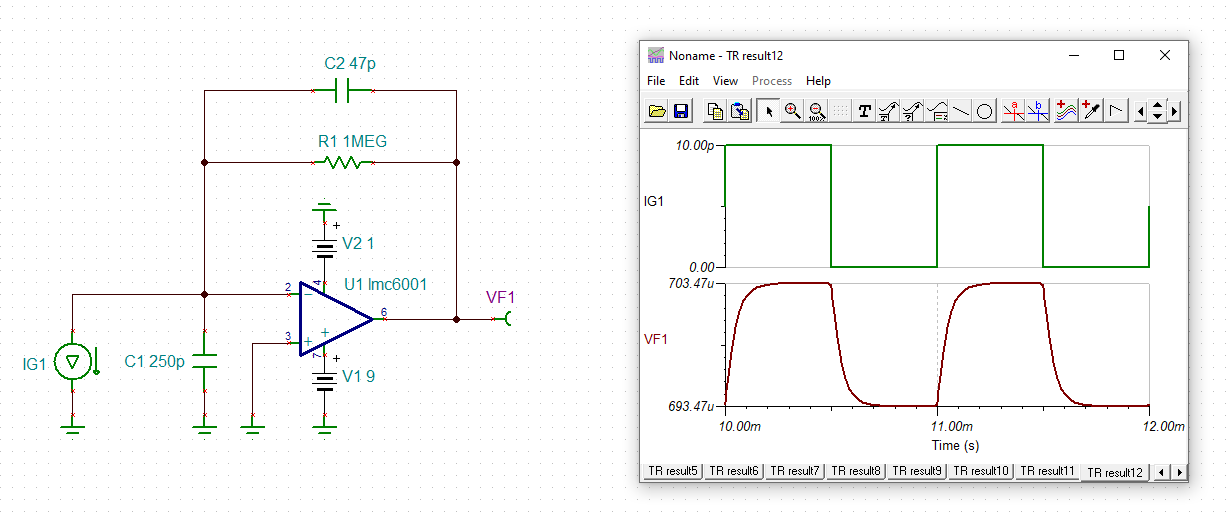Other Parts Discussed in Thread: LM7705
I tried to make a transinpedance amplifier for measuring pA-level current from a photodiode.
I confirmed that DC-light signal was shown using an oscilloscope.
However, 50Hz signal appeared and overlapped with the DC-signal.
When I turn off the 9V battery, the 50Hz noise signal noticeably increased.
I have two questions.
1. Is the attached circuit wrong?
2. Why the circuit detected 50 Hz signal?
I need your support. Thanks in advance.



